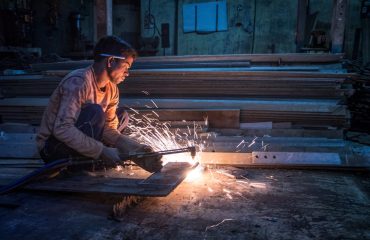In a world increasingly conscious of hygiene and infection control, the development of antibacterial surfaces is paramount. Antibacterial steel, with its inherent durability and now enhanced antimicrobial properties, is emerging as a significant player in this field. This post delves into the science behind antibacterial steel, its applications, benefits, limitations, and future prospects.
The Science Behind Antibacterial Steel
Traditional stainless steel, while resistant to corrosion and relatively easy to clean, doesn’t inherently kill bacteria. Antibacterial properties are achieved through various methods, primarily involving the addition of antimicrobial agents to the steel’s composition or through surface modification techniques. One common approach involves incorporating silver ions (Ag+) into the steel matrix. Silver ions are known for their potent antimicrobial activity, disrupting bacterial cell membranes and inhibiting their growth. This can be achieved through alloying, where silver is directly incorporated into the steel during the manufacturing process, or through surface deposition techniques, such as sputtering or ion implantation, which deposit a thin layer of silver onto the steel surface. Other antimicrobial agents, such as copper or zinc, are also being explored for their potential use in antibacterial steel.
Applications of Antibacterial Steel in Various Industries
The antimicrobial properties of antibacterial steel make it highly suitable for a wide range of applications where hygiene is crucial. In the healthcare industry, it can be used for countertops, sinks, medical equipment, and handrails, reducing the risk of hospital-acquired infections (HAIs). Food processing plants benefit greatly from antibacterial steel surfaces, preventing bacterial contamination and improving food safety. Public spaces, such as airports, train stations, and shopping malls, can also utilize antibacterial steel for frequently touched surfaces like door handles and elevator buttons, minimizing the spread of germs. Even in the home, antibacterial steel can be incorporated into kitchen appliances and bathroom fixtures to enhance hygiene and cleanliness.
Benefits of Choosing Antibacterial Steel
The advantages of using antibacterial steel are numerous. Beyond its inherent antimicrobial properties, it offers several key benefits. Its durability ensures longevity and reduces the need for frequent replacements, unlike some other antimicrobial materials. It’s relatively easy to clean and maintain, further contributing to its effectiveness in infection control. The long-lasting antimicrobial effect reduces the need for constant sanitization, saving time and resources. In healthcare settings, this translates to a reduction in HAIs, improved patient outcomes, and lower healthcare costs. In food processing, it safeguards product quality and minimizes waste caused by contamination. The aesthetic appeal of stainless steel also adds to its desirability in various applications.
Limitations and Considerations of Antibacterial Steel
While antibacterial steel offers significant advantages, it’s important to acknowledge its limitations. The effectiveness of the antimicrobial properties can vary depending on the method of incorporation and the concentration of the antimicrobial agent. The durability of the antimicrobial layer might degrade over time due to wear and tear, especially in high-traffic areas. The initial cost of antibacterial steel can be higher than that of regular stainless steel, though the long-term cost savings from reduced maintenance and replacement might offset this. Furthermore, the potential for the development of antimicrobial resistance remains a concern, although research is ongoing to address this issue. Appropriate cleaning and disinfection protocols should still be followed, even with antibacterial steel, to maintain optimal hygiene.
The Future of Antibacterial Steel and Ongoing Research
Research and development in antibacterial steel are continuously evolving. Scientists are exploring new antimicrobial agents and surface modification techniques to improve the effectiveness and longevity of the antimicrobial properties. The focus is on developing sustainable and environmentally friendly methods for producing antibacterial steel. Nanotechnology plays a significant role in enhancing the antimicrobial efficacy and durability of these surfaces. The integration of smart sensors that monitor bacterial growth and trigger automated cleaning systems is also a promising area of research. The future of antibacterial steel holds immense potential for revolutionizing hygiene and infection control across various sectors.
Tags: Antibacterial Steel, Antimicrobial Steel, Stainless Steel, Hygiene, Infection Control, Healthcare, Food Safety, Public Health




